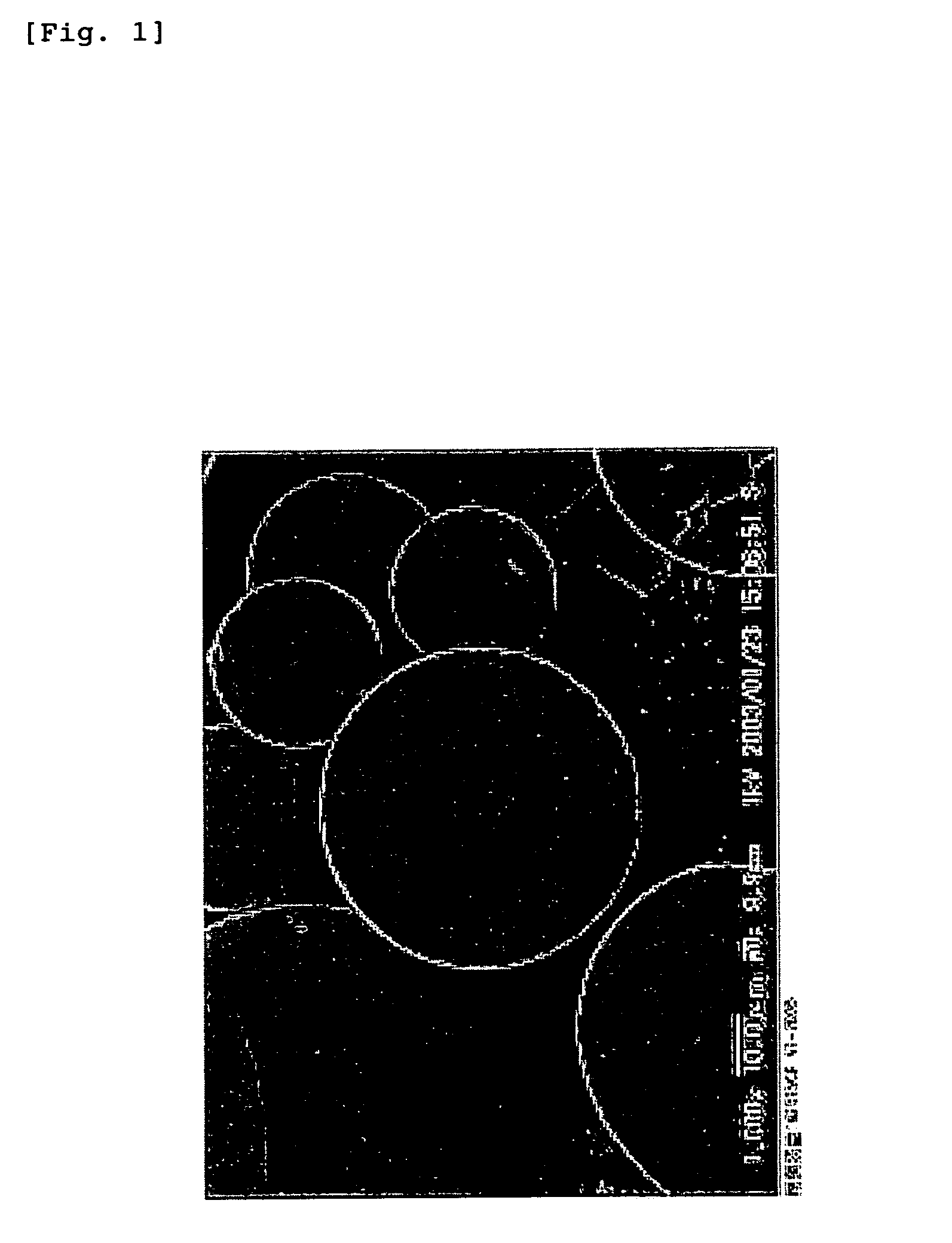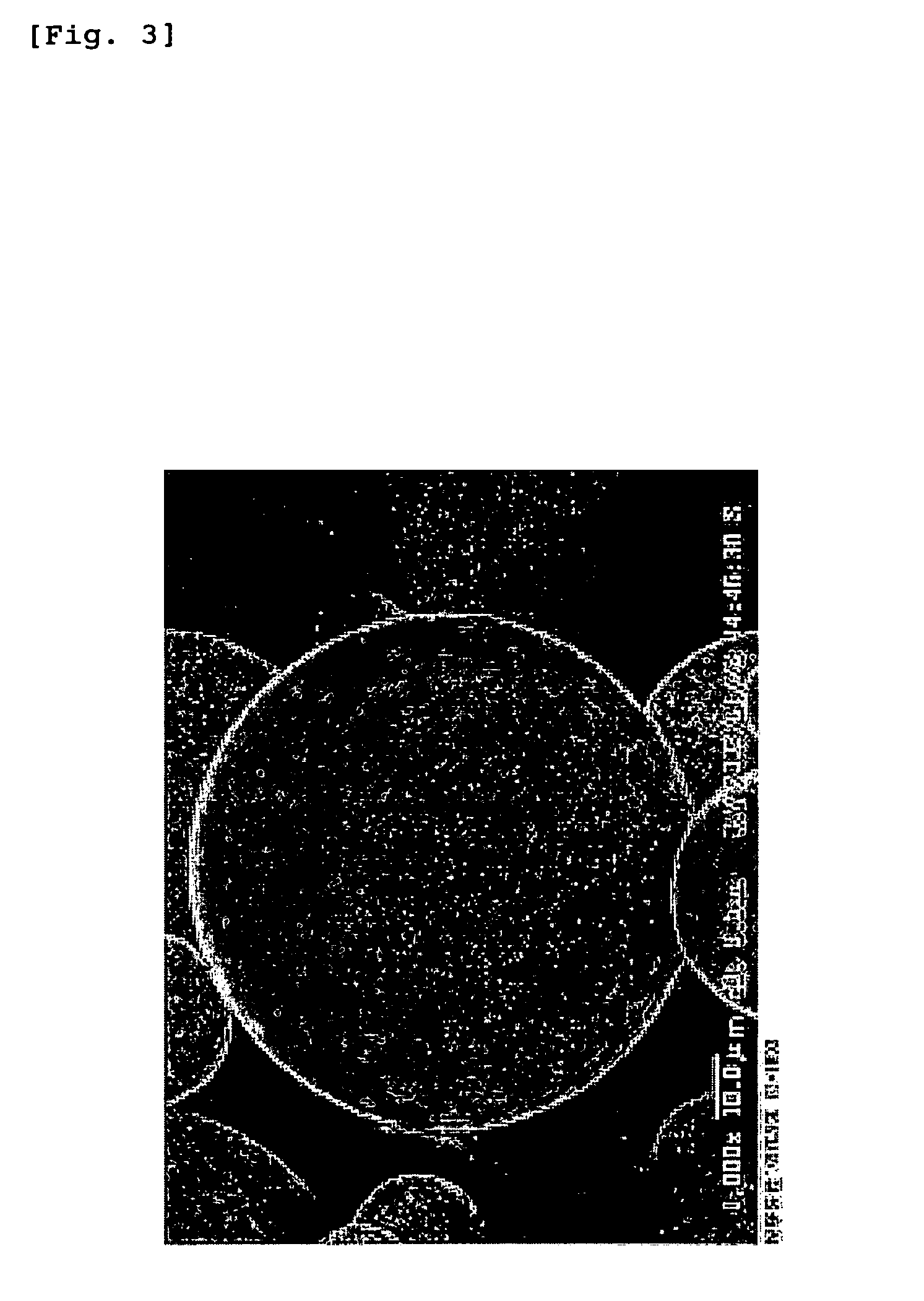Hyaluronic acid modification products and drug carriers using them
a technology of hyaluronic acid and modification products, which is applied in the direction of sugar derivates, organic chemistry, synthetic polymeric active ingredients, etc., can solve the problems of synovitis, high pain, and dispersibility of administered solutions, and achieve excellent biocompatibility, high dispersibility, and no safety problems
- Summary
- Abstract
- Description
- Claims
- Application Information
AI Technical Summary
Benefits of technology
Problems solved by technology
Method used
Image
Examples
example 1
Preparation of Hyaluronic Acid-Coated PLGA Microspheres
example 1-1
Synthesis of Hyaluronic Acid having Hydrazide Groups (HZ) Introduced Therein (HA-HZ)
[0200]Hyaluronic acid (HA) having a molecular weight of 2.5×104 daltons (DENKI KAGAKU KOGYO K.K.; 100 mg) was dissolved in distilled water at a concentration of 1%, and the pH of the solution was adjusted to 4.7 to 4.8 with 5N hydrochloric acid. 1-Ethyl-3-(3-dimethylaminopropyl)carbodiimide (EDC) (Sigma-Aldrich Corp.) and dihydrazide adipate (ADH) (Sigma-Aldrich Corp.) were added to the solution such that the amount of EDC added was at a molar ratio of 5:1, and the amount of ADH added was at a molar ratio of 40:1, to glucuronic acids (carboxyl groups) contained in the Hyaluronic acid used. The mixture was reacted for 2 hours at room temperature, with its pH being kept at 4.7 to 4.8 with 5N hydrochloric acid. The reaction mixture was dialyzed against a 100 mM aqueous solution of sodium chloride and a 25% aqueous solution of ethanol (Spectra / Por 7, molecular cutoff (MWCO): 12 k-14 k daltons), and lyoph...
example 1-2
Preparation of PLGA Microspheres
[0202]PLGA7510 (Wako Pure Chemical Industries, Ltd.: molecular weight 10,000 daltons) was dissolved with the addition of 10 mL of methylene chloride (JUNSEI CHEMICAL CO., LTD.) to prepare a 10% (w / v) solution. This solution was mixed with 90 mL of a 1% aqueous solution of polyvinyl alcohol (87-89% hydrolyzed, molecular weight 13,000-26,000) (i.e. PVA aqueous solution) at a mixing ratio of 1:9 (v / v). The mixture was stirred at about 700 rpm by a stirrer to obtain an oil-in-water (O / W) emulsion. The emulsion was put in 900 mL of a 1% PVA aqueous solution, and the mixture was stirred overnight at about 200 rpm, followed by distilling off the solvent, to obtain a suspension of microspheres. The suspension was centrifuged for 10 minutes at 1,000 rpm at 4° C., and the supernatant was removed. The residue was thoroughly washed with water, and lyophilized. The lyophilizate was recovered as microspheres. The measurement of the particle size by SEM image analys...
PUM
| Property | Measurement | Unit |
|---|---|---|
| mean blood residence time | aaaaa | aaaaa |
| particle size | aaaaa | aaaaa |
| particle size | aaaaa | aaaaa |
Abstract
Description
Claims
Application Information
 Login to View More
Login to View More - R&D
- Intellectual Property
- Life Sciences
- Materials
- Tech Scout
- Unparalleled Data Quality
- Higher Quality Content
- 60% Fewer Hallucinations
Browse by: Latest US Patents, China's latest patents, Technical Efficacy Thesaurus, Application Domain, Technology Topic, Popular Technical Reports.
© 2025 PatSnap. All rights reserved.Legal|Privacy policy|Modern Slavery Act Transparency Statement|Sitemap|About US| Contact US: help@patsnap.com



